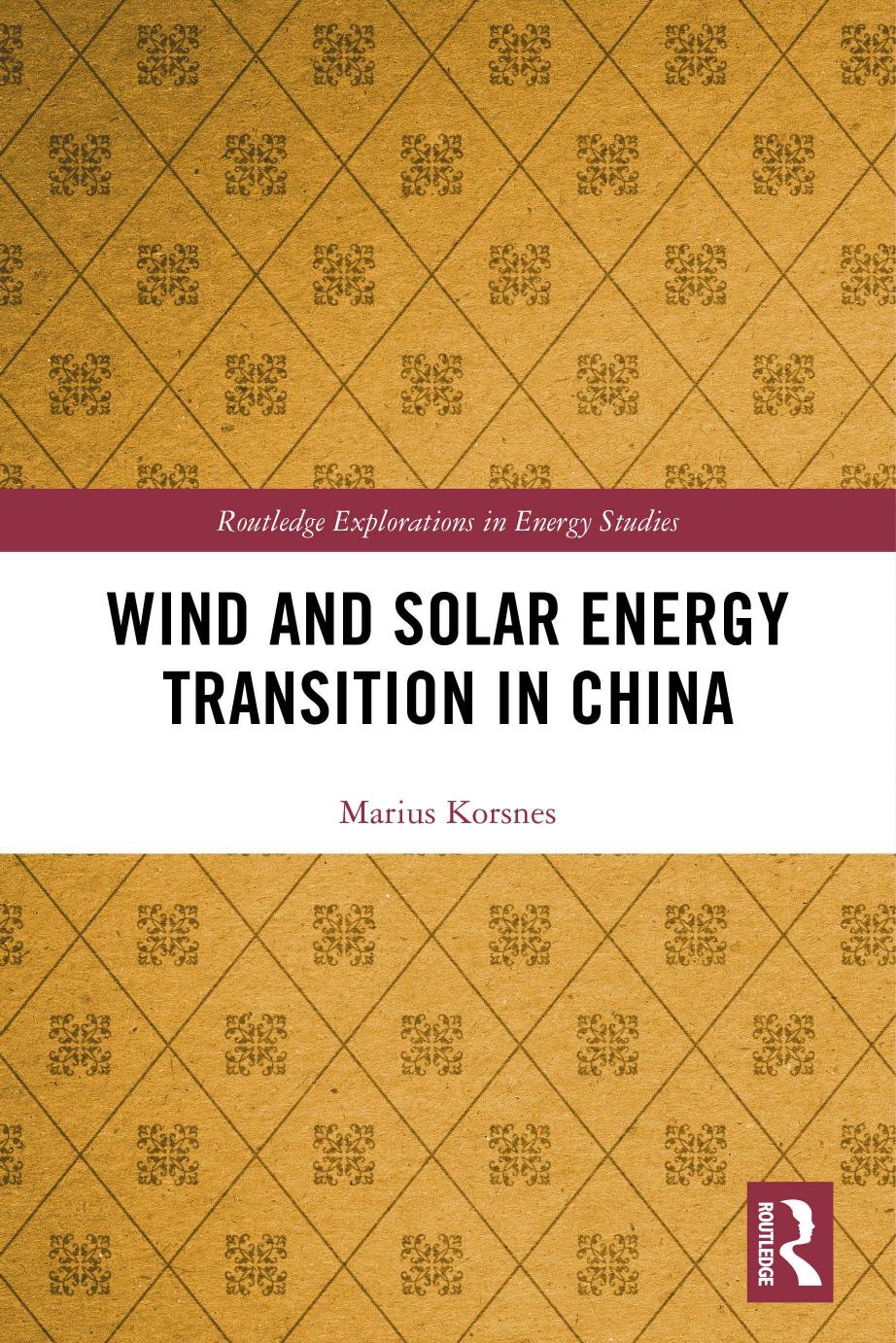Wind and Solar Energy Transition in China by Marius Korsnes

Author:Marius Korsnes [Korsnes, Marius]
Language: eng
Format: epub, pdf
Tags: Public Policy, East, Political Science, Asia, Travel, China, Environmental Policy
ISBN: 9780429576768
Google: wu6yDwAAQBAJ
Goodreads: 50821289
Publisher: Routledge
Published: 2019-09-25T00:00:00+00:00
5 The international relations of the wind and solar industries
Markets, experiences and initiatives outside of China have impacted Chinaâs solar PV and wind industries in considerable but different ways. As established in the previous chapter, Chinaâs wind industry was mainly based on the domestic market, and licensed technologies from European companies, whilst the solar PV industry to a large extent was supplying PV panels to the European and US markets and produced the panels domestically with turnkey industry plants from European and US companies. Only around 2012/2013 did China for real start installing PV domestically, around the same time as Germany started reducing government support for PV. This chapter shows the interplay, interrelations and negotiations occurring between China and the world during the buildup of the wind and solar industries. Particular attention is paid to foreign actors on the one hand who want to sell their knowledge and gain access to the Chinese markets, and on the other hand, Chinese actors who want to learn but also prefer to do things their own way.
In 2010, China captured about 50 percent of the global wind turbine market, up from 4.4 percent in 2005, and almost all of these turbines were installed domestically (REN21 2011). In the solar PV market, the statistics were surprisingly similar except that most PV panels were exported: China (excl. Taiwan) produced about 50 percent of the global solar cells in 2010, compared to about 5 percent in 2004 (Marigo 2007). From 2010, this changed abruptly, and by the end of 2017, China had already installed 33 percent of the world cumulative PV domestically (131 gigawatts [GW] out of a total of 402 GW), at the same time as it manufactured about 70 percent of global solar cell and module supply (Bin 2018; REN21 2018). For wind energy, China continued to lead the world in wind turbine manufacturing by the end of 2017 and captured about 35 percent of the accumulated global wind power capacity, but most turbines were still installed domestically (CWEA 2018). Some Chinese wind turbine companies such as Goldwind, Mingyang and Envision have ventured into international markets, cultivating interactions with countries such as India, Thailand and Ethiopia, but this is still just a marginal aspect of their business (Zhou, Pan and Urban 2018). Letâs take a closer look at the role of international experiences for Chinaâs wind and solar PV industries.
Download
Wind and Solar Energy Transition in China by Marius Korsnes.pdf
This site does not store any files on its server. We only index and link to content provided by other sites. Please contact the content providers to delete copyright contents if any and email us, we'll remove relevant links or contents immediately.
China Rich Girlfriend by Kwan Kevin(4294)
The Silk Roads by Peter Frankopan(4275)
Annapurna by Maurice Herzog(3301)
Full Circle by Michael Palin(3269)
Hot Thai Kitchen by Pailin Chongchitnant(3215)
Okonomiyaki: Japanese Comfort Food by Saito Yoshio(2628)
The Ogre by Doug Scott(2506)
City of Djinns: a year in Delhi by William Dalrymple(2436)
Photographic Guide to the Birds of Indonesia by Strange Morten;(2408)
Vietnam, Cambodia, Laos & Northern Thailand by Lonely Planet(2320)
Tokyo by Rob Goss(2293)
Tokyo Geek's Guide: Manga, Anime, Gaming, Cosplay, Toys, Idols & More - The Ultimate Guide to Japan's Otaku Culture by Simone Gianni(2242)
Everest the Cruel Way by Joe Tasker(2133)
Discover China Travel Guide by Lonely Planet(2119)
Iranian Rappers And Persian Porn by Maslin Jamie(2100)
China (Lonely Planet, 11th Edition)(2037)
Lonely Planet China(2031)
China Travel Guide by Lonely Planet(1993)
Top 10 Dubai and Abu Dhabi by DK Travel(1991)
